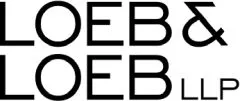- within Food, Drugs, Healthcare and Life Sciences topic(s)
- with readers working within the Advertising & Public Relations industries
- within Tax, Consumer Protection and Employment and HR topic(s)
Admittedly, visions of rainbow-colored carnival taffy or neon sour treats can't help but conjure a sense of childhood nostalgia for at least some readers of this post. Yet, driven by the goals of Health and Human Services (HHS) Secretary Robert F. Kennedy and the increased spotlight on the processed food industry more generally, the U.S. Food and Drug Administration (FDA) announced last week a proposal to eliminate synthetic dyes from the U.S. food system. FDA's plan will have broad application to a range of products, including packaged foods, processed meats, beverages, dietary supplements and restaurant foods, among other food products.
Perhaps unsurprisingly, major food manufacturers and retailers have been reticent to publicly decry FDA's initiative, particularly given that many packaged foods marketed in Europe, Canada and other countries are already made without such synthetic colors. Further, several states, including California and West Virginia, have already passed laws restricting the use of certain artificial colors in foods, signaling a growing domestic push for reform. While HHS Secretary Kennedy has indicated that the patchwork of state laws motivated the food industry to work with FDA, the planned phase out of synthetic food colorings would not preempt such state laws.
Nevertheless, the purpose of this article is not to debate the merits of food safety, but rather to analyze the process for how FDA plans to go about eliminating artificial food dyes, including the potential timeline, opportunities and hurdles for doing so. As stated in a joint HHS/FDA press release issued on April 22, 2025, the proposal involves the following six steps. We offer thoughts on each:
"Establishing a national standard and timeline for the food industry to transition from petrochemical-based dyes to natural alternatives." At this stage, it is unclear what FDA has in mind for a "national standard" for the transition to natural alternatives—HHS Secretary Kennedy recognized that there is no formal process or agreement for industry to participate, at this time. Further, we suspect that there will be ongoing debate as to what food colors qualify as "natural alternatives." As evidenced by the last decade of litigation surrounding "natural" claims for food, the scope of what qualifies as a natural food ingredient is the subject of frequent state consumer class action lawsuits—in part because FDA has yet to issue any formal definition of "natural." As an added complexity, under FDA's current food regulations (21 C.F.R 101.22(a)(4)) the term "artificial color" captures any "color additive," where FDA defines a color additive as any color (even from a natural source) that is intentionally used to impart color. In this respect, even colors from natural sources could fall under FDA's definition of "artificial" colors.
"Initiating the process to revoke authorization for two synthetic food colorings—Citrus Red No. 2 and Orange B—within the coming months." Citrus Red No. 2 and Orange B were initially authorized for use as color additives in the 1960s. Now, more than 60 years later, FDA is taking a closer look. FDA has authority to revoke FDA-approved color additives as a matter of law that present potential safety concerns. One option for doing so—which FDA used to revoke authorization for Red No. 3 earlier this year—is for FDA to rely on the so-called "Delaney Clause" of the Federal Food, Drug and Cosmetic Act (FDCA), which bans the use of any food additive found to be carcinogenic. To the extent FDA raises other health concerns aside from cancer, FDA may appeal to other provisions of the FDCA requiring food additives to be safe and fit for consumption.
"Working with industry to eliminate six remaining synthetic dyes—FD&C Green No. 3, FD&C Red No. 40, FD&C Yellow No. 5, FD&C Yellow No. 6, FD&C Blue No. 1 and FD&C Blue No. 2—from the food supply by the end of next year." This is an ambitious timeline, and FDA recognizes that this measure requires working in partnership with industry. At this time, there is no formalized process for implementing this removal of the six synthetic food dyes. It remains to be seen whether FDA's 2026 goal will result in discontinued availability of such foods in the marketplace by 2026, or whether industry will simply begin to implement manufacturing changes by 2026.
"Authorizing four new natural color additives in the coming weeks, while also accelerating the review and approval of others." Specifically, FDA indicated a plan to "fast track" review of calcium phosphate, Galdieria extract blue, gardenia blue, butterfly pea flower extract and among other natural alternatives to synthetic food dyes. Certain of these ingredients are already permitted for use as FDA-authorized food additives. However, FDA authorization relates to use in specific food, at specific dosage levels and with certain label requirements. FDA's review could expand these ingredients' use to additional food categories and/or for different usages.
"Partnering with the National Institutes of Health (NIH) to conduct comprehensive research on how food additives impact children's health and development." The details around this partnership are limited. However, HHS Secretary Kennedy has indicated that HHS/FDA will partner with NIH to permit discussion of questions that had once been considered "taboo."
"Requesting food companies to remove FD&C Red No. 3 sooner than the 2027-2028 deadline previously required." FDA recognizes that this measure is a "request" given, particularly given FDA only recently announced a ban on Red No. 3. Specifically, on January 15, 2025, FDA finalized an order requiring food and ingested drug manufacturers to reformulate products to remove Red No. 3 by January 15, 2027, and January, 18, 2027, respectively. It remains to be seen whether the food industry can and will work to remove Red No. 3 ahead of this timeline—consumer sentiments and demand may dictate this answer.
In sum, while much of FDA plan for synthetic food dye removal has yet to be defined or established through any formal process, this proposal is unlikely to fall off FDA's radar. Rather, we anticipate that FDA will continue to prioritize this effort based on the goals of HHS Secretary Kennedy and similar initiatives at the state level. The food manufacturing industry appears willing to work with FDA on this process. However, it remains to be seen if the proposed sweeping changes will be implemented by 2026 per FDA's stated goal.
Food manufacturers, retailers and e-commerce platforms should discuss with counsel how these changes may impact their food and dietary supplement products.
The content of this article is intended to provide a general guide to the subject matter. Specialist advice should be sought about your specific circumstances.


